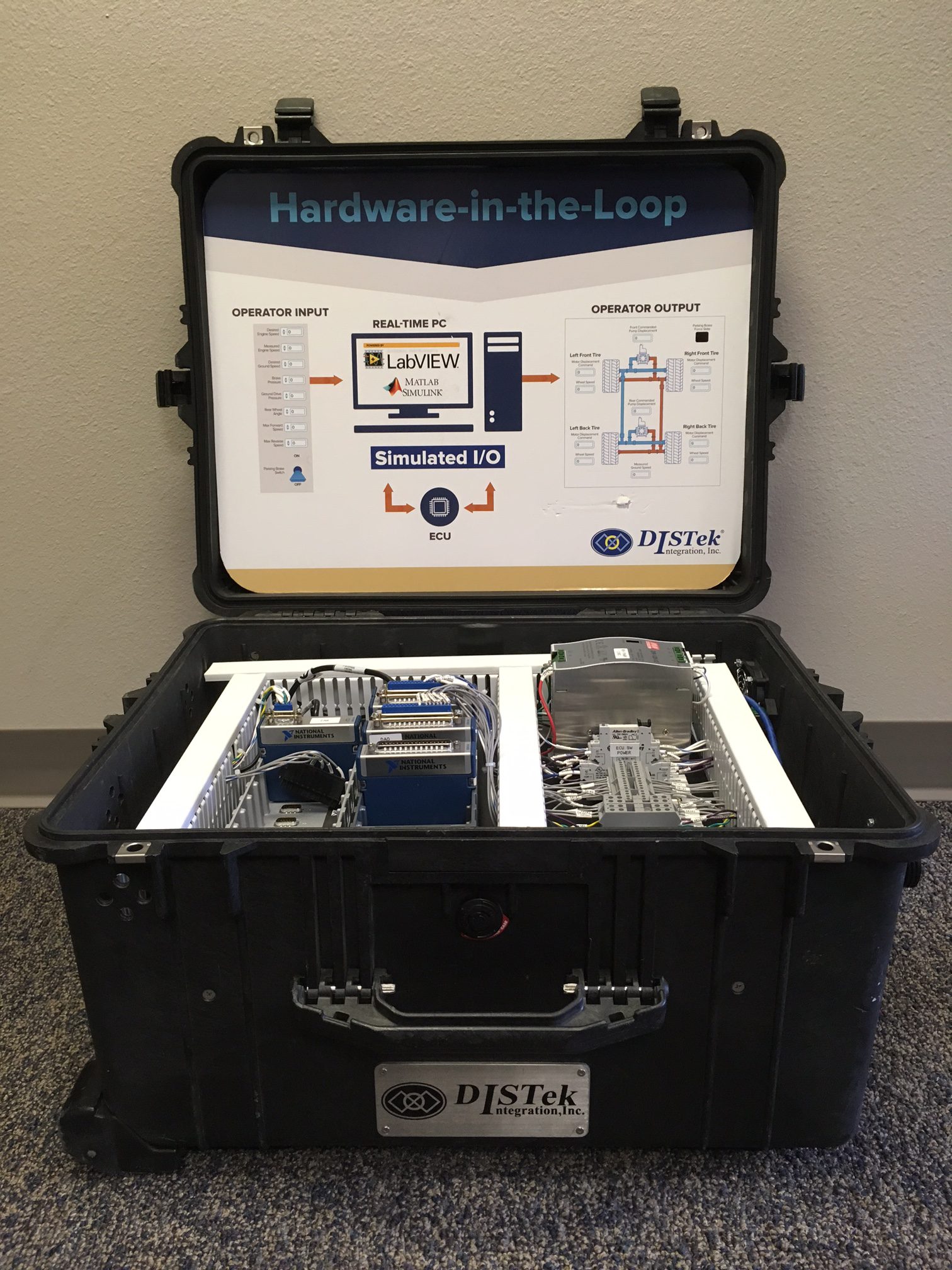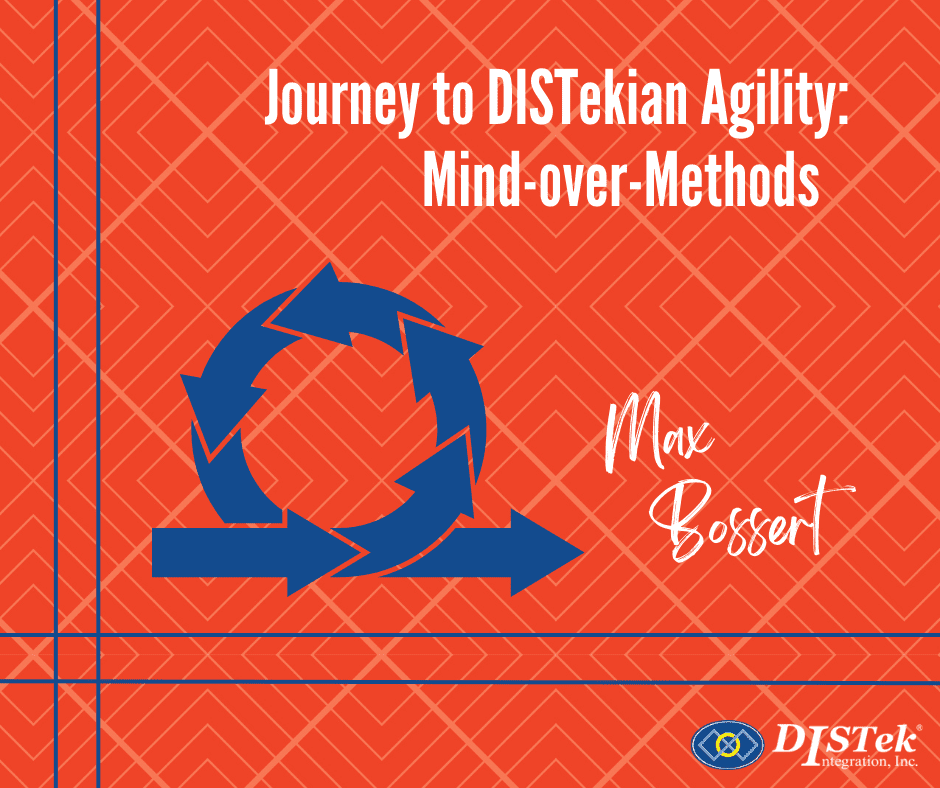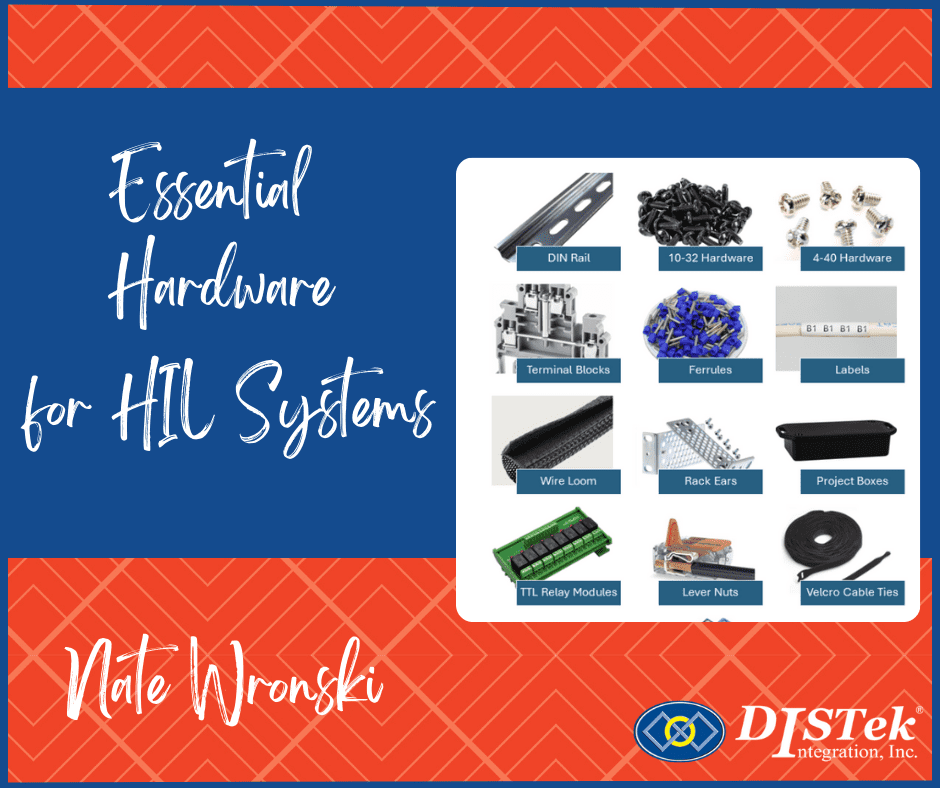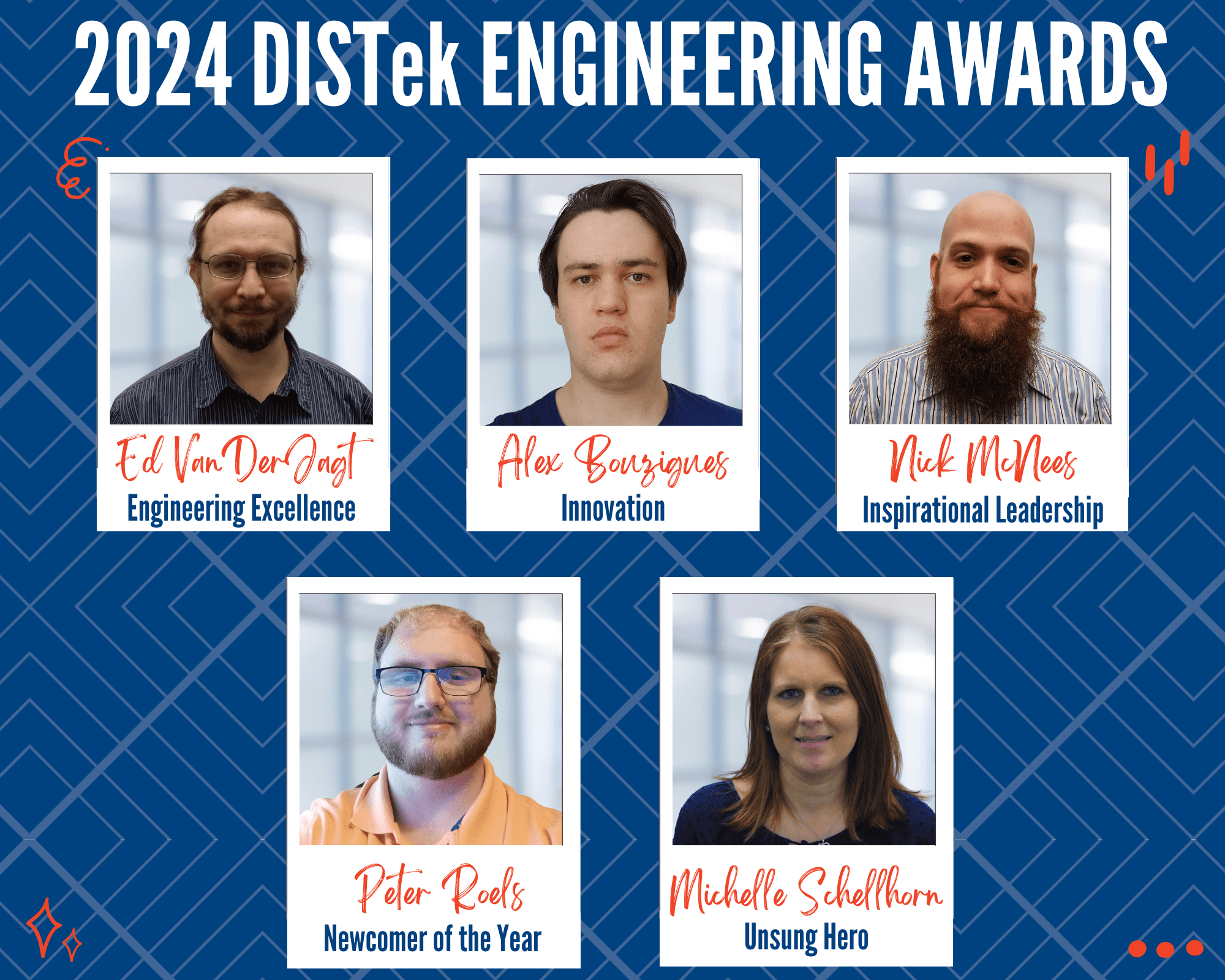Hardware in the Loop (HiL) systems are used in the development and test of real-time embedded systems often found in Electronic Control Units (ECU) within almost any on- or off-highway vehicle today. HiL systems are comprised of both hardware and software that can simulate the larger entity (i.e. car, tractor, etc.), so that the smaller ECU can be inserted into that larger system to determine whether or not it’s internal real-time embedded system is performing as intended. While this may seem like a mountainous task for vehicle manufacturers in industry today, DISTek has invested in tackling the design and production of an internal HiL solution. In this blog, we will discuss the hardware components and capabilities of the HiL system we designed, the challenges we faced in its design, and the overall value it has brought for DISTek internally and for our customers.
The hardware design for this HiL system revolved predominantly around its need to be both flexible and fast, allowing us to utilize it on as wide array of internal and external projects as possible. The functional goal was to be able to simulate a wide array of digital input and output signals, including discrete, pulse width modulation (PWM), encoder, and custom user-defined signals. Due to the speed requirement of the system, the main data acquisition and generation component was a National Instruments cRIO solution which included a Field Programmable Gate Array (FPGA) and a selection of data acquisition/generation modules. The FPGA can execute a program at rates of up to 40 million times per second and the data acquisition modules can read/write at rates of up to 100 thousand times per second. Additionally, the software created for this system allows the data acquisition hardware to be configured by the user, enabling channels in the system to be utilized as inputs or outputs based on the user’s needs. While the finished system’s capabilities are extensive and useful, the process of designing and building it presented a few challenges.
The most formidable challenge we faced was overcoming our contradictory design goals, those being flexibility and speed. In the software industry these two characteristics usually illustrate an inverse relationship, the more flexible a system is, the slower a system is, and vice versa. The FPGA hardware component that was selected for this project is extremely fast but not inherently flexible, nor does it have a large amount of memory to store the software. In order to maintain as much speed as possible while achieving the desired level of flexibility, a substantial amount of time had to be invested in the design of flexible software architecture for the FPGA. This architecture was then continuously optimized until it was able to actually fit on the FPGA. This software solution was able to give us the best of both worlds, making this HiL an extremely versatile and valuable tool.
DISTek as a company has designed and implemented many embedded software solutions and HiL systems for our clients in the off-highway industry. This HiL will provide us with the capability to further test those embedded solutions before delivering them to clients, resulting in a more robust product and ultimately a happier customer. Additionally, having a HiL internally will allow us to offer HiL testing services to our clients that cannot afford to purchase their own system outright. This project brings DISTek one step closer to becoming the #1 preferred supplier of HiL solutions in the off-highway industry. So, to all our customers out there, I encourage you to let DISTek turn your mountainous task into a molehill with our experienced and capable engineers in regard to complete HiL solutions.






